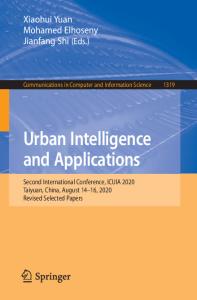Desert classification based on a multi-scale residual network with an attention mechanism
- PDF / 7,499,528 Bytes
- 13 Pages / 595 x 842 pts (A4) Page_size
- 46 Downloads / 273 Views
Geosciences Journal
GJ
Desert classification based on a multi-scale residual network with an attention mechanism Liguo Weng1, Lexuan Wang1, Min Xia1*, Huixiang Shen1, Jia Liu1, and Yiqing Xu2 1
Jiangsu Collaborative Innovation Center on Atmospheric Environment and Equipment Technology, Nanjing University of Information Science and Technology, Nanjing 210044, China 2 College of Information Science and Technology, Nanjing Forestry University, Nanjing 210037, China
ABSTRACT: Desert classification is the fundamental for preventing and/or controlling desertification. Topographical features of desert remote sensing images change constantly due to the uncertainty of desert terrain, illumination, and other properties. Therefore, it is a very challenging task to accurately classify desert areas. In order to quickly and accurately classify desert from remote sensing images, this paper proposed a multi-scale residual network based on an attention mechanism. The network used conventional convolutions to perform preliminary feature extraction on images, and subsequently adopted a multi-scale residual module to further process the feature maps. Based on the idea of fusing multi-scale features, the multi-scale residual module effectively reduced information loss and possible gradient disappearance because of using skip connections. By introducing the attention mechanism, dependencies between feature channels were established, as a result, the network could recalibrate channel characteristic responses adaptively. Experimental results showed that the proposed network had better generalization ability and a higher accuracy on classification of multispectral desert remote sensing images compared with other methods. Key words: desert classification, multi-scale feature extraction module, residual network, attention mechanism Manuscript received November 21, 2019; Manuscript accepted June 10, 2020
1. INTRODUCTION Desertification is a land degradation phenomenon characterized by wind-sand activities in arid and semi-arid areas due to the imbalance of human-nature relationship. The necessary precondition for effectively preventing and/or controlling desertification is to understand the status, extent and dynamic evolution of desertification by monitoring desert land classification (Zhang et al., 2003; Yue et al., 2017). Desertification areas are always environmentally harsh and almost unpopulated, therefore it is inconvenient to perform on-site investigation. Research data from such areas is very limited, and hence it is difficult to implement prevention and/or management (Yang et al., 2005). In recent years, the technology of satellite remote sensing has been developing rapidly (Hamida et al., 2018), making it possible to obtain remote sensing *Corresponding author: Min Xia Jiangsu Collaborative Innovation Center on Atmospheric Environment and Equipment Technology, Nanjing University of Information Science and Technology, Nanjing 210044, China Tel: +86-1516-14-88227, E-mail: [email protected]
©The Association of Korean Geoscienc
Data Loading...











